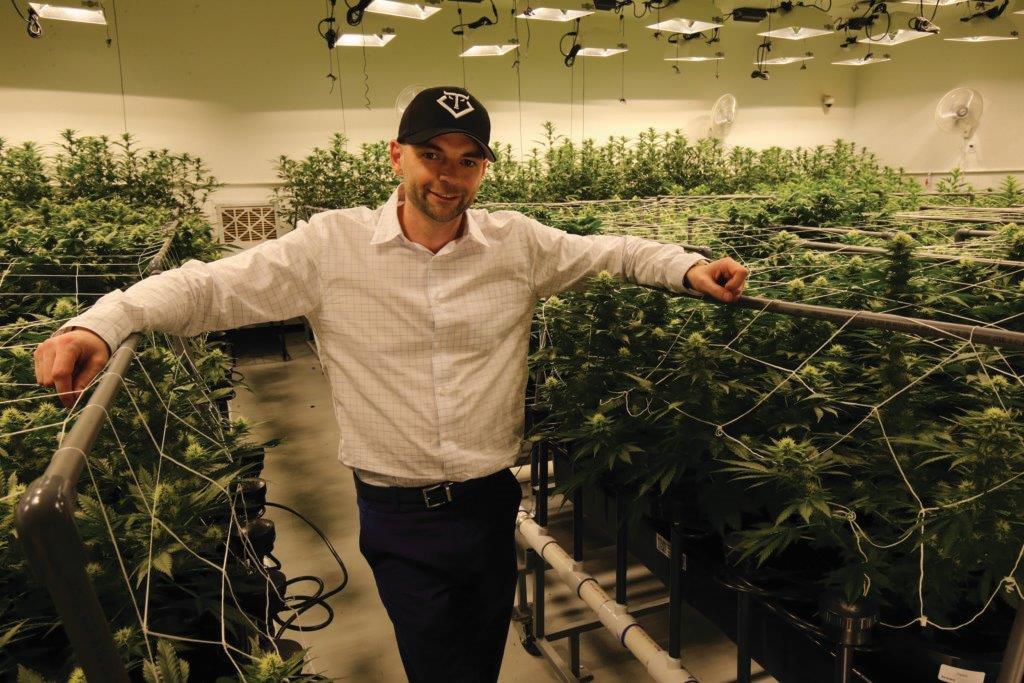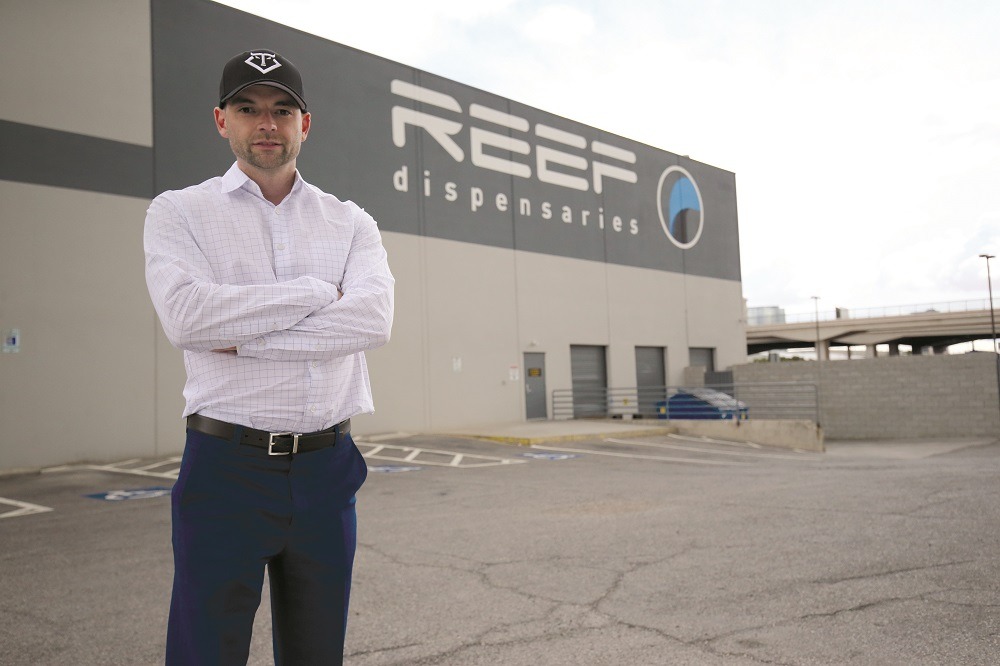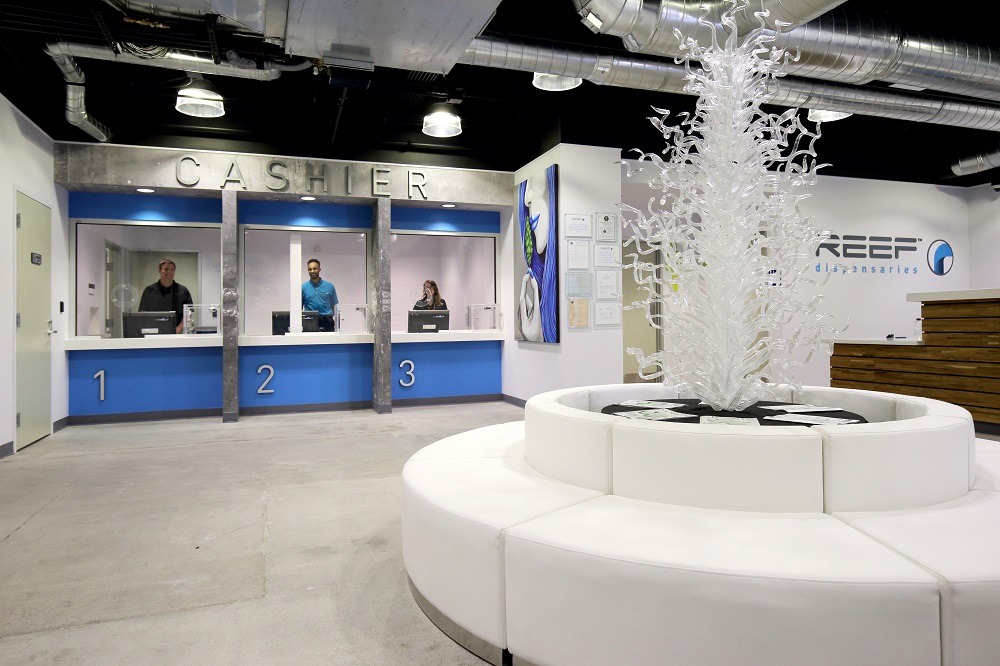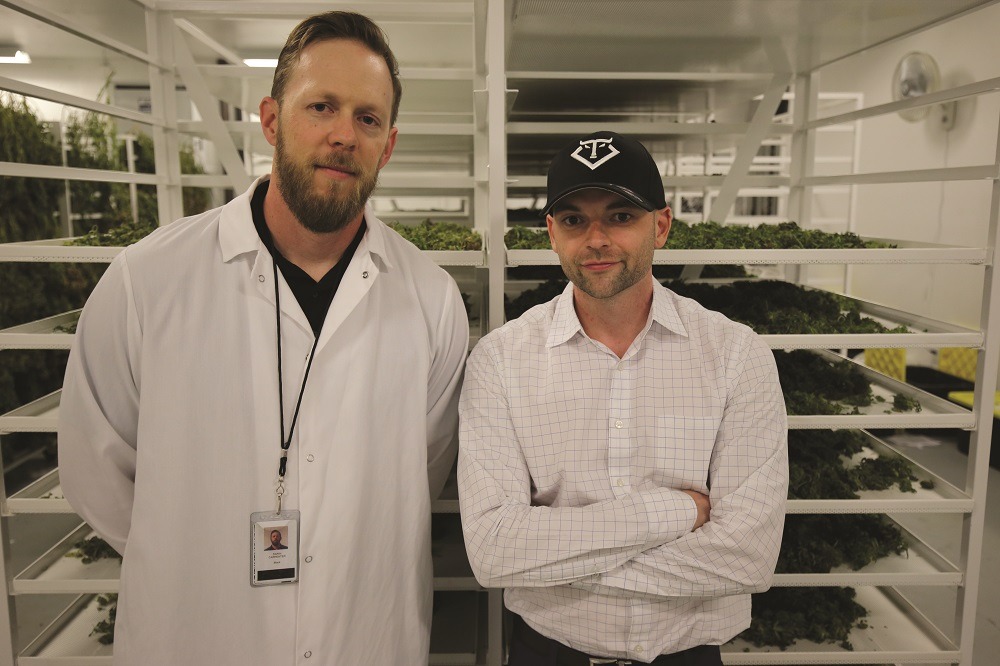Matthew Morgan should be accustomed to the pageantry associated with grand openings by now — the media interviews, the giant brass scissors cutting an oversized ribbon, the rush of patrons excited for new opportunities.
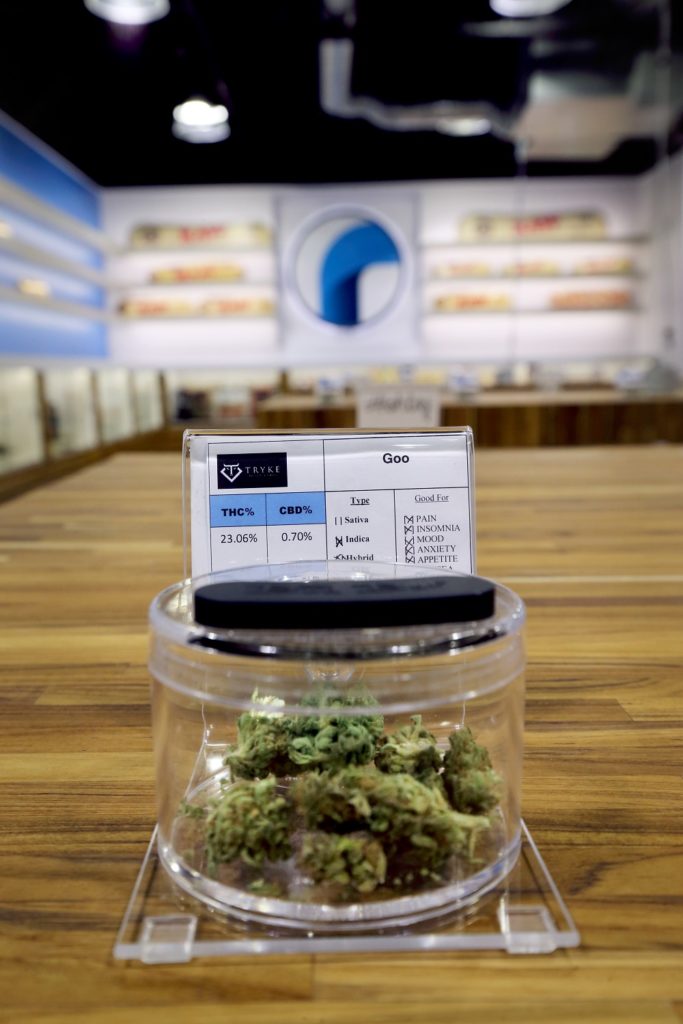
Located just blocks away from the Las Vegas Strip, the state-of-the-art flagship complex features a massive grow operation, in-house extraction lab, 5,000 square feet of retail space, and even its own power plant capable of running 4,500 homes.
“There is really nothing else like it in the country,” says Morgan, the CEO of Tryke Companies, which owns Reef Dispensaries. “I’m not going to throw around specific numbers, but I’ll tell you the cost was in the tens of millions.”
What happens in Vegas
Nevada might be the hottest spot in the country for cannabis right now.
“One of the many reasons Nevada was so appealing is that licensed companies can grow unlimited square footage, unlimited plants and unlimited weight,” Morgan says.
In addition to Las Vegas being a major tourist destination, Nevada was also the first state in the country to give reciprocity for medical marijuana patients, allowing out-of-state cardholders the same shopping rights as in-state patients.
The flagship dispensary is just the beginning for Tryke, which has secured eight licenses for cultivation and retail in Nevada. It’s a preview of how Morgan plans to optimize Nevada’s legal structure for his business. The company will be opening four more Reef Dispensaries this summer.
“We should have 150-180 employees by the end of the year,” Morgan says.
Prior to expanding into Nevada, Tryke Companies opened its first Reef location and 30,000-square-foot indoor grow operation in Arizona as a proof of concept. With Reef Dispensaries already generating revenue in Arizona, Morgan began to focus on bringing Tryke’s high-concept designs to fruition in Las Vegas.
The Facility
Building a facility of this size and scope may seem like overkill for Nevada’s 15,000 registered patients. Even factoring in revenue from out-of-state cardholders, which Morgan says makes up for 50% of foot traffic, the cost of powering a 165,000-square-foot warehouse is daunting.
But Tryke’s facility wasn’t built using traditional cannabis industry standards.
Morgan and head grower Darin Carpenter looked beyond the cannabis industry to borrow designs for the facility. They repurposed ideas and technology from research laboratories, semi-conductor plants, the tech industry and commercial agriculture to make the facility as efficient as possible.
“The semi-conductor industry uses central plants to power these massive production facilities and precise environments,” Carpenter says. “We took ideas from that as well as the server rooms in data centers to create an environment that is pristine.”
The team opted for a centralized chilling system instead of standard air-conditioning. In order to cool the facility, Morgan estimates it would take upwards of 500 typical air-conditioners, which would require reinforced ceilings due to the added weight.
Morgan turned to data centers and Las Vegas casinos for Tryke’s solution to reducing cooling costs in the desert heat. The chillers installed at the facility promises reliable temperature control at half the cost of standard air-conditioning.
“There’s a reason why all of the biggest resorts on the Strip use a centralized chilling system, so we mimicked what all these other large industries are doing and brought it over to the cannabis space,” Morgan says.
Tryke’s internal power station provides four megawatts of power for the facility.
The company’s watering system is 70% more efficient than other grows of the same size. Air handlers above the plants and lights pull moisture out of the air from the transpiring plants and feed into the reverse osmosis system, where water gets cleaned and returned back to the reservoirs. The reverse osmosis system is capable of recycling up to 75,000 gallons of water per day, Morgan says.
To reduce the risk of microbial contamination, Carpenter designed the layout of the grow operation to mirror neurological research labs he worked in as an undergrad. The design allows product to flow more efficiently between stages, while saving time and money on decontamination efforts.
“Understanding that if you touch a dirty surface and you go into a new room, you probably are going to have a higher likelihood of contaminating that room,” Carpenter says. “We created bifurcations, zones in hallways so people can’t just go from the propagation area to the flowering area.”
The bifurcation areas and reverse osmosis systems are not new additions to the industry, but, much like the towering 14-ton CO2 tank used to feed all the grow rooms inside the facility, they represent a sense of scale and foresight that is unique in the cannabis space.
Morgan and Carpenter plan to implement new evolutions of the facility’s design as Tryke opens its next cultivation facilities.
“I think the technology is going to progress,” Morgan says. “I think a lot of things are going to change, so we are always going to use the most advanced, highest level of technology we can find to move forward on these cultivation facilities.”
“There is a lot of tricky stuff we are looking at to improve our efficiency in the future,” adds Carpenter, pointing to lower operating costs and reduced environmental impact as noteworthy benefits.
At the moment, the massive building only utilizes a portion of its space. But Nevada residents will have the chance to vote on recreational cannabis legalization this fall, presenting an opportunity for even more growth.
Tryke front-loaded all the power, water and cooling needed to operate the entire facility to prepare for eventual expansion.
“So the minute we need to turn on all the manufacturing, we can do so with the flip of a switch,” Morgan says.
The Dispensary
Reef Dispensaries was created with much the same philosophy as the cultivation center furnishing it. Morgan and his team took inspiration from tech industry giants like Apple for form and function.
The CEO says the concept of legal cannabis is very new, very futuristic to people, so he didn’t want budtenders plucking product out of big jars with tongs.
“I felt like that was a very archaic way of doing things,” he says.
Reef’s look is far more modern; no marijuana leaves, no tie-dye, no reminders of the black market culture that fueled the industry’s underground years.
The color green is completely absent from the dispensary — outside the flowers on display. Shades of emerald are replaced by cool blues, adding to the modern, futuristic look that fits perfectly with Sin City’s hotel casinos.
Morgan says the goal of the dispensary is to provide a universal experience where patients are not confined to waiting rooms, standing in long lines or inundated with antiquated imagery.
While paperwork is being processed, patients are free to explore the spacious sales floor and peruse the varieties of products available. Patient consultants walk the floor with tablets, ready to answer questions or provide a quick point of sale for patients.
“I wanted to create an experience that was exhilarating from the time you step in the door,” Morgan says. “Even though you’re not purchasing the second you walk inside, you get to walk through this huge room with a ton of inventory that you can keep yourself occupied until you’re ready to talk with a patient consultant.”
Tryke’s in-house brands have been created to cater to every demographic, Morgan says. The company’s CBD-rich topicals and tinctures are produced under the Indigo brand. Connoisseur lines include Terps, Tryke Black Label, and Exotics by Berner, while budget brands like Hashtag are geared toward entry-level consumers.
The cultivation facility produces 60 different strains and harvests two crops per week. The dispensary also carries third-party vendors in addition to Tryke’s in-house brands.
Futureproofing
At 31, Morgan doesn’t plan on leaving the cannabis industry anytime soon, so he has strategically positioned Tryke Companies for the long term. He’s implemented contingency plans in the event of changes to federal or state laws, whether they impact legal marijuana positively or negatively.
For now, the company plans to expand further in the Southwest, where Morgan feels the market will remain the strongest over the next few years, but both national and even international opportunities are being reviewed.
Chief revenue officer Paul Goetz says the company plans to focus on more exclusive markets moving forward — locations such as Nevada that have competitive licensing processes.
Markets with a higher barrier to entry are preferred over saturated markets where competitors can acquire licenses with ease, he says.
With the launch of Tryke’s flagship location behind him, Morgan says the team is already designing the next facility to run even more efficiently. While grow operations and dispensaries pop up throughout Nevada, Morgan says he’s more focused on building his own empire than paying attention to the competition. But he’s cognizant of the pressure and the responsibility that comes with people relying on Tryke for their livelihoods.
“I have to understand that any of my actions have serious repercussions to not only myself and the company, but to 130 people and their families,” Morgan says. “So I am very cautious about what I do.
“I am very competitive and I hate to lose. But at the same time, I think every operator in the country is going toward the common, goal and that’s eventually getting legalization of this plant on a national scale.”



